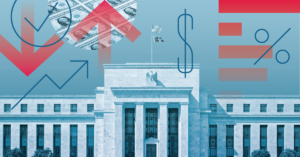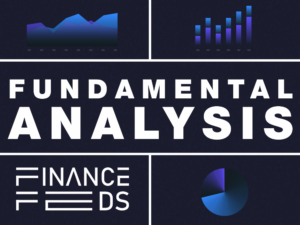
What causes policy mistakes? - Econlib
In another post, I argued that two factors contributed to monetary policy mistakes:
1. Having the wrong target.
2. Having an instrument setting unlikely to hit the target.
In the comment section, John made the following claim:
I think this was a good post and the right post to respond to Tyler with, but it does raise a conundrum. Your argument is basically that policymakers shouldn’t rely on inflation forecasting models and should instead rely on market-based expectations of inflation (or nominal GDP). But how should the market participants forecast inflation (or nominal GDP)? I don’t think nominal GDP is high because the Fed let nominal GDP be high is satisfactory for this purpose (maybe if the Fed actually had the objective to target NGDP).
I believe there are cases where “nominal GDP is high because the Fed let nominal GDP be high” is a useful way of understanding the problem, even if it’s not a complete explanation in the deepest sense of the term.
Consider the following analogy. Fred is depressed. One day while driving down the road, he decides to accelerate his car and plow into a tree. Now consider two possible explanations for the fatal crash:
1. Fred felt depressed, and committed suicide.
2. Fred’s right hand suddenly moved from a position at 12 o’clock on the steering wheel to a position at 3 o’clock on the wheel, causing the car to suddenly veer toward a big tree.
There is a sense in which the second explanation is more scientific, more like “physics”. But most people would find the first explanation to be more useful.
Insiders suggest that by late 2021 the Fed fully understood that NGDP was about to rise well above trend. Outside the Fed, the same perception was widespread. So why did the Fed make this mistake? In a recent comment, Rajat reminds me of an exchange between David Beckworth and Jason Furman, which occurred on mid-2021. Here’s Rajat’s comment:
From when I started reading your blog in 2011, it took me at least a couple of years to grasp the importance of level targeting to your approach. The NGDP aspect was what brought you to prominence, perhaps because it was so intuitive in the midst of a supply shock, but in (my) hindsight is less important. I think the reason that policy-makers and people like Tyler have such difficulty accepting level targeting is that it removes a major policy escape valve. I constantly come back to David Beckworth’s interview with Jason Furman on Macro Musings (from June 2021) where Furman said:
“You in 2019, put down a really elegant framework for nominal GDP targeting. If we were following it now, we would already have lifted off interest rates. And we’re going to, with extreme likelihood, overshoot the nominal GDP target we were on.
So under your framework, you’d have to make up for that with a sustained period of lower than trend on nominal GDP growth. I don’t mean that to pick on you, this experience has destroyed anyone’s plans that they wrote down before. It’s such a weird period. But to me, that says, “I’d like the Fed, if the unemployment rate a year from now is still 5.5%, I’d like the Fed to take that into account, regardless of what’s happening to nominal GDP or prices as an independent problem and issue that they need to take into account.” So I think that anything has to have a dual mandate, but do you look at nominal GDP and the like, instead of inflation? Maybe.”
As it turned out, had the Fed tightened in 1H 2021, the US probably would have avoided most of the excess price level increase it has experienced with little reduction in employment growth. But as you noted, the supply shocks have mostly been reversed in the US. What if that never happened and the Fed tightened in 1H 2021 anyway? Then maybe employment would not have recovered as quickly, and policy-makers would have been under a lot of pressure from people like Furman.
I have enormous respect for Furman, who is an outstanding economist. But in this particular case he got it wrong; policy did need to tighten in order to prevent a big NGDP overshoot. The Fed knew what it was doing. It set rates at zero and did extensive quantitative easing, despite clear signs of above trend NGDP growth. If we go back to the two types of mistakes outlined at the top of this post, the late 2021 error was clearly an example of “having the wrong target.”
More broadly, almost all important Fed policy mistakes are of this type. Commenters occasionally point out that the inflation surge of 2021-23 ended up being much larger than the TIPS market expected in early 2021. That’s true, but this fact doesn’t have the implication that many assume. It does not mean that the Fed was doing the best job it could, and just got unlucky. Under a level targeting regime the inflation surge would have been far milder, some transitory supply-side inflation but no permanent NGDP overshoot. The primary cause of high inflation over the past 5 years has been NGDP overshooting its 4%/year trend line by 11%. That’s a lot!
If I would weight my policy advice in terms of relative importance, it would be:
A 10% weight on using markets to guide policy. (Tactics)
A 90% weight on doing NGDP level targeting. (Strategy)
If you are not aiming for the right target, it doesn’t help much to be a skilled navigator. Market guidance is useful, but it’s not a panacea.




